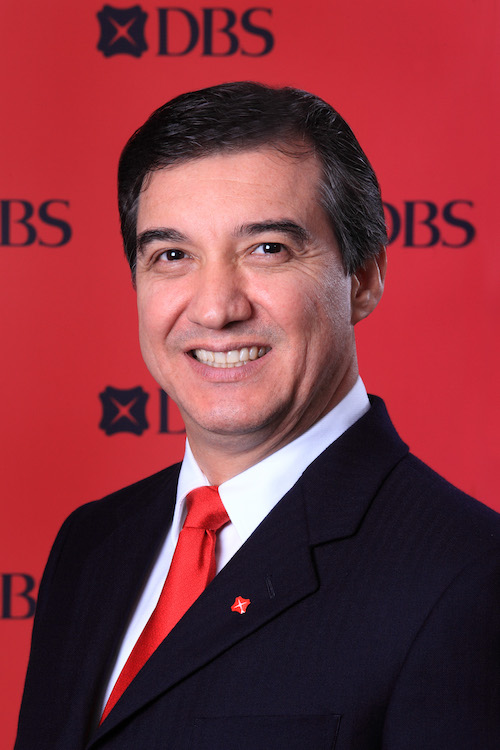Case study: DBS – the edge
DBS is shaping up to be a fintech innovator when it comes to both external customer facing digitisation as well as using tech to provide operational efficiency. From being a relatively early adopter of AI chatbots within its mobile banking app it is now adapting to the era of open banking with an API platform.
This was launched in November 2017 and DBS says that it is the largest banking API platform offering in the world. This should set it in good stead in a market where customers increasingly demand easy access to related products and services via existing service providers.
Accordingly the bank has tried to create appropriate networks for its customers and to do so it has sought to collaborate with governments, partners, fintechs, start-ups and other members of the ecosystem.
Shee Tse Koon, group head of strategy and planning, and head of ecosystems, DBS, says: “We wanted to make banking simpler and more seamless for customers through the use of partner APIs. By creating ecosystem partnerships – collaborating, creating and innovating together with partners – we believe that we can provide the best products, solutions and experiences. This has the potential to significantly accelerate the bank’s digital ambition and customer impact.”
The platform currently holds 155 APIs with categories such as funds transfers, rewards, PayLah! (Singapore’s most popular mobile wallet) and real-time payments. But as well as financial offerings there are also lifestyle and leisure offerings – building the total number of categories to 20.
Examples of this expansive nature include household names such as AIG, McDonald’s, MSIG, PropertyGuru, as well as start-ups like Activpass, FoodPanda, Homage, and soCash.
The bank says it will increase the amount of APIs on the platform in response to demand. Currently, the most popular APIs are the ones that enable more convenient cashless payments as businesses look to simplify point-of-sale processes.
The presence of McDonalds, for example, shows how it can twin Paylah’s cashless functionality on the platform with its round the clock delivery service
Another, PropertyGuru (an Asian online property group), offers customers an instant affordability assessment. “Building our API platform has given us an edge – this allows us to operate with fintech-like agility and nimbleness, and also platform-like inclusiveness. This will be transformative in ways not imagined previously, both for the customer and the bank,” comments David Gledhill, DBS’s group CIO.
Artificial intelligence
But the API platform is just the latest in the bank’s fintech programme. It has been using artificial intelligence (AI) since 2016 when it was the first to roll out an AI chatbot. The technology behind this belongs to US-based Kasisto. This is a spin-off from SRI International, which created the technology behind Siri (Apple’s voice assistant). The technology uses smart bots and virtual assistants with banking knowledge.
This meant that customers could bank conversationally from their preferred mobile messaging app – including Facebook Messenger. Using the chatbot customers manage their money across accounts, track expenses and even make payments in the process. There are plans to extend it to other mobile messaging apps like WhatsApp and WeChat in the next 12 months but as yet, no public stats of take up and usage.

Sebastian Paredes, DBS: mutual exchange of knowledge and best practices will shape the future of finance
Accelerator programme
To further progress the use of fintech the bank also has an accelerator programme, run from Hong Kong since 2015.
Since inception, the accelerator programme has worked with 30 start-ups and all have since secured funding support or expanded their business in Hong Kong.
DBS Bank (Hong Kong) CEO Sebastian Paredes comments: “The DBS Accelerator has helped spearhead our successful efforts to expand our collaboration with fintech start-ups and seek new horizons in digital innovation.
“We believe the mutual exchange of knowledge and best practices with the fintech ecosystem will foster start-up success and help shape the future of finance.”
The six start-ups currently within the programme range from CUBE, an automated compliance engine, to Hyper Anna, an AI bot and DOV-E a mobile push notification service.
DOV-E plays into the push for usability at the front end. It delivers mobile push notifications and mobile payment solutions for point of sale (POS) and online and is embedded within a mobile banking app. The security is provided with one time only tokens rather than holding sensitive data on the mobile.
Basically, the customer waves his or her mobile device near to a retailer’s POS, vending machine or e-commerce website for instant payment. This could work with the bank’s API platform, allowing customers to engage with providers like McDonald’s on the platform.
Another of the accelerator’s participants, CUBE, feeds into the bank’s own desire to use technology to make efficiencies within its own operations. Again, this is something that is playing heavily on the minds of most banks in a world where regulations are taking up an enormous amount of time and resource.
CUBE uses AI, machine learning (ML) and natural language processing (NLP) to manage regulatory compliance. In practice, the solution captures regulatory data automatically and on a continuous basis. It then creates a single source of cross-border regulatory intelligence. This is then mapped onto a firm’s policies, procedures, records and customer communications, to identify which regulations are relevant to specific jurisdictions and lines of business. It then provides alerts when regulatory change occurs and can help to flag up the impact of any changes on policy and procedure – the idea being that a bank can return to a compliant state as soon as possible.
And a third accelerator participant – Hyper Anna – is an AI robot that can be used especially effectively when it comes to writing code, analysing data, producing charts and, more importantly, insights – all things that come along with data analytics. It is voice enabled and works on a self-service basis as an overlay to proprietary data. It is intended to be especially useful operationally to identify customer interactions, finance, compliance, supplier activities to power high-impact use cases. This could include cross-sells/up-sells, expense management, and revenue forecasting, supply chain management, amongst others.
Internal operational efficiency
Investing time in start-ups like these backs up the bank’s own initiatives when it comes to operating efficiently and making the best use of data analytics capabilities to inform process.
Gledhill comments: “We’ve been working hard not just to improve our front end technology but also to run a more efficient technology architecture and infrastructure, resulting in massive cost savings for the bank.”
To this end, the bank has been working to scale an enterprise-wide centre of excellence (COE) in robotic process automation (RPA), since November 2017. This was the first of its kind within the banking industry in the region and the idea was that by making better use of time and resources, that the bank could save operating expenses, up employee productivity, reduce error rates, and quicken speed-to-market.
Indeed, according to research conducted by analyst firm Forrester, by 2019, process automation will change up to an estimated 25% of the work associated with all job categories…
By Alison Ebbage, editorial contributor to FinTech Futures
This is an excerpt. The full article is available in the July/August 2018 issue of the Banking Technology magazine. Click here to read the digital edition – it is free!














































Very insightful feature. The banks that will gain more are the ones that will innovate and in a timely manner.